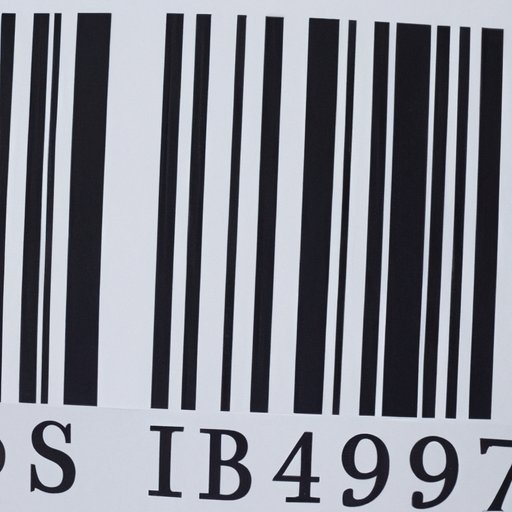Introduction
Barcodes are a type of machine-readable representation of data that is used primarily in retail settings. They are typically printed on labels or tags, and can be scanned by electronic scanners to quickly identify products. Barcodes have become an essential tool for businesses, allowing them to easily track inventory and sales. But when were barcodes invented? This article will explore the history of barcodes, from their pioneering invention to their evolution over time.
A History of Barcodes: How and When They Were Invented
The first barcodes were developed in the early 1970s by IBM researchers George Laurer and Norman Joseph Woodland. The two developed a system called “Universal Product Code” (UPC), which was first used in supermarkets in 1974. UPC codes consist of a series of vertical black lines and white spaces of varying widths, which can be read by a scanner. The code contains information about the product, such as its price and manufacturer.
Since then, barcodes have gone through several iterations. The most recent version, known as 2D barcodes, uses a more complex pattern of squares, rectangles, and other shapes to store additional information. These barcodes are much smaller than traditional barcodes, making them easier to scan and store more data. 2D barcodes are commonly used in retail stores, libraries, and other applications.

The Early Days of Barcoding: When the Idea Was Born
Though barcodes were first developed in the 1970s, the idea of using barcodes to track products dates back to the late 19th century. In 1888, a grocer in Ohio named James Ritty patented the first mechanical cash register. His invention included a way to record sales transactions using a system of punched cards, which could be read by a device similar to a typewriter. Though this system never became widely used, it laid the groundwork for later barcoding systems.
In 1932, a graduate student at Harvard University named Wallace Flint proposed a system for encoding data onto products using a series of dots. His idea was to use the dots to represent letters and numbers, which could then be used to track products. Though his proposal was never implemented, it showed the potential for using barcodes to track products.
In 1952, Bernard Silver and Norman Woodland, two graduate students at Drexel Institute of Technology, built upon Flint’s idea and developed a system for encoding data onto products using a series of circles. They called their system the “bull’s eye code,” and it was the first system to use optical scanning. Though their system was never commercially successful, it served as the basis for modern barcode technology.
Who Came Up With the Concept?
Though barcode technology has been around for decades, the person most closely associated with its invention is George Laurer. Laurer was an engineer at IBM and the lead developer of the UPC system. He worked closely with Norman Joseph Woodland to develop the first barcodes and was instrumental in the development of the system. According to Laurer, “I designed the original barcode symbology, wrote the specifications, and supervised the testing of the first barcode readers.”

Examining the Development of Barcodes
Since the invention of the UPC system, barcodes have gone through several stages of development. In the 1980s, the first two-dimensional barcodes were developed. These barcodes used patterns of squares and rectangles instead of lines and allowed for more data to be stored in a smaller space. In the 1990s, three-dimensional barcodes were developed, which allowed for even more data storage and flexibility. Today, barcodes are used in a variety of applications, from tracking products in retail stores to tracking medical records in hospitals.
Conclusion
Barcode technology has come a long way since its invention in the 1970s. From its pioneering invention by George Laurer and Norman Joseph Woodland to its evolution over time, barcodes have become an essential tool for businesses. The early days of barcoding saw the development of the first optical scanning systems, and today barcodes are used in a variety of applications. As barcode technology continues to evolve, it will no doubt remain a vital part of our lives for years to come.
(Note: Is this article not meeting your expectations? Do you have knowledge or insights to share? Unlock new opportunities and expand your reach by joining our authors team. Click Registration to join us and share your expertise with our readers.)
